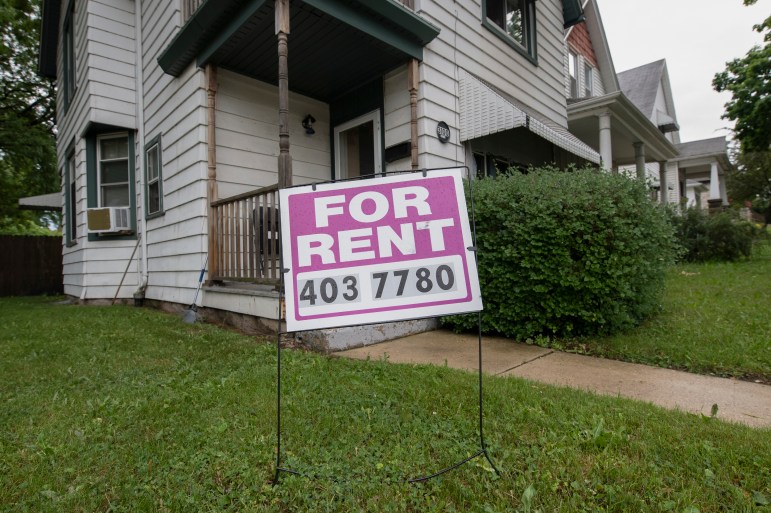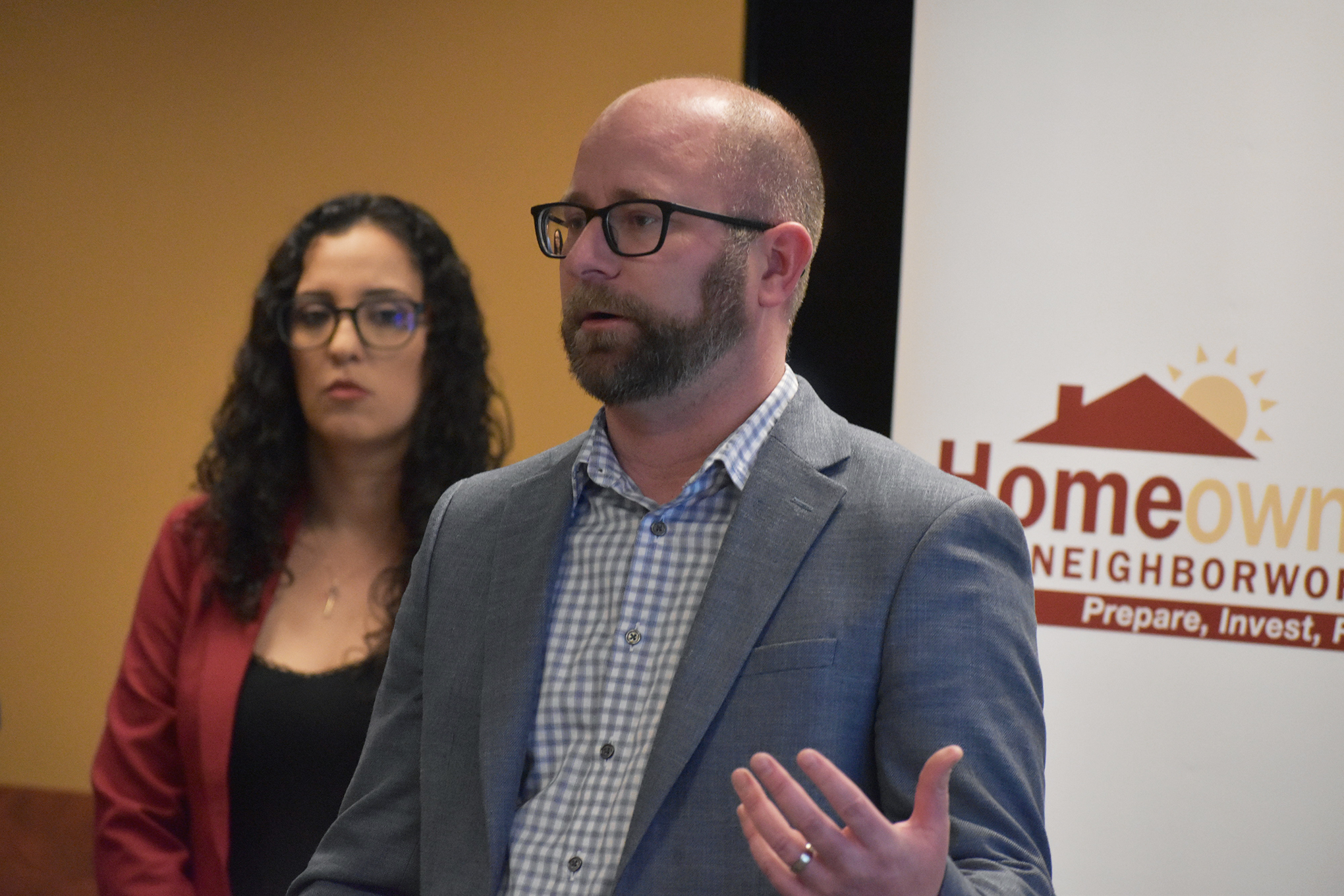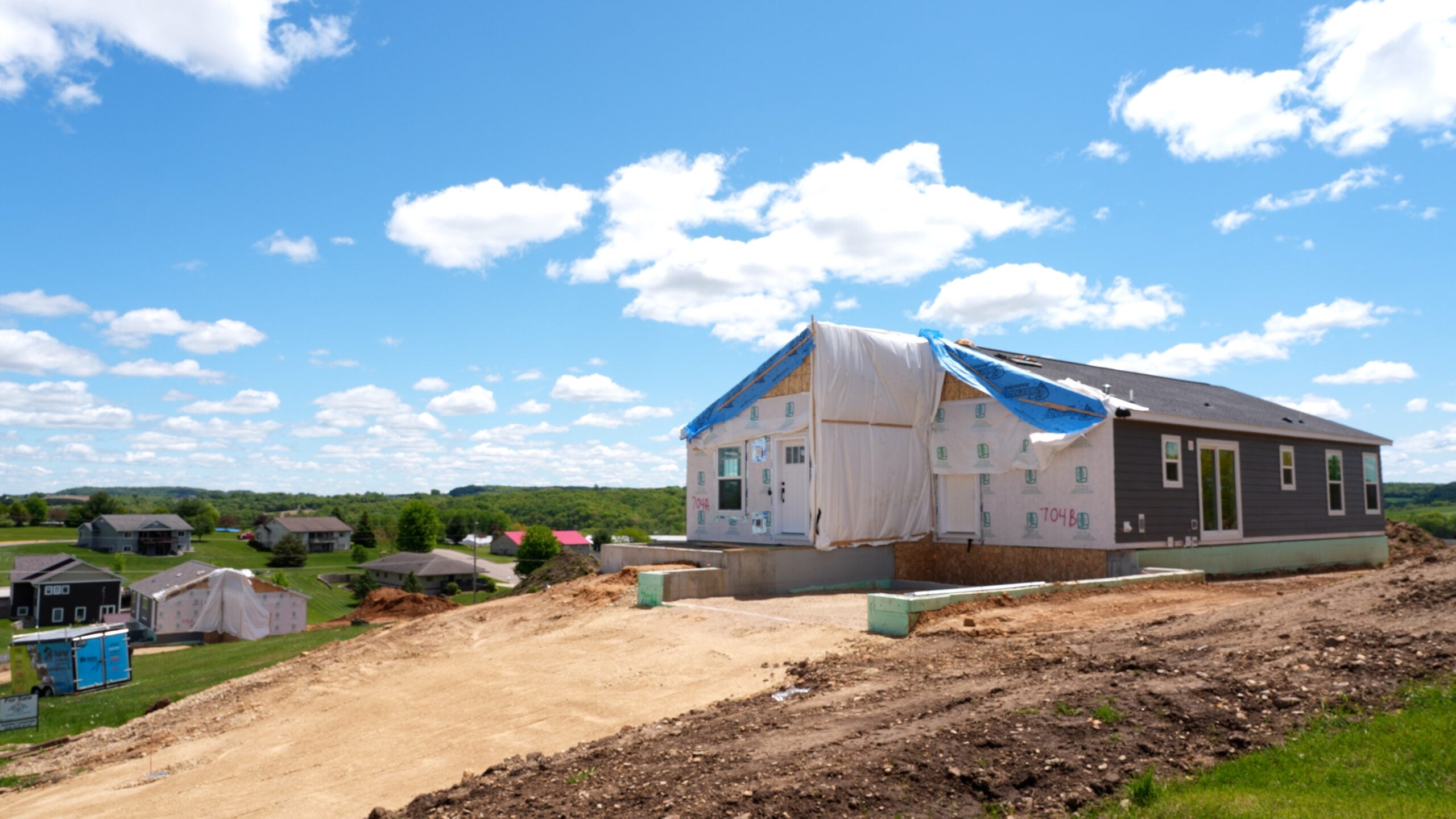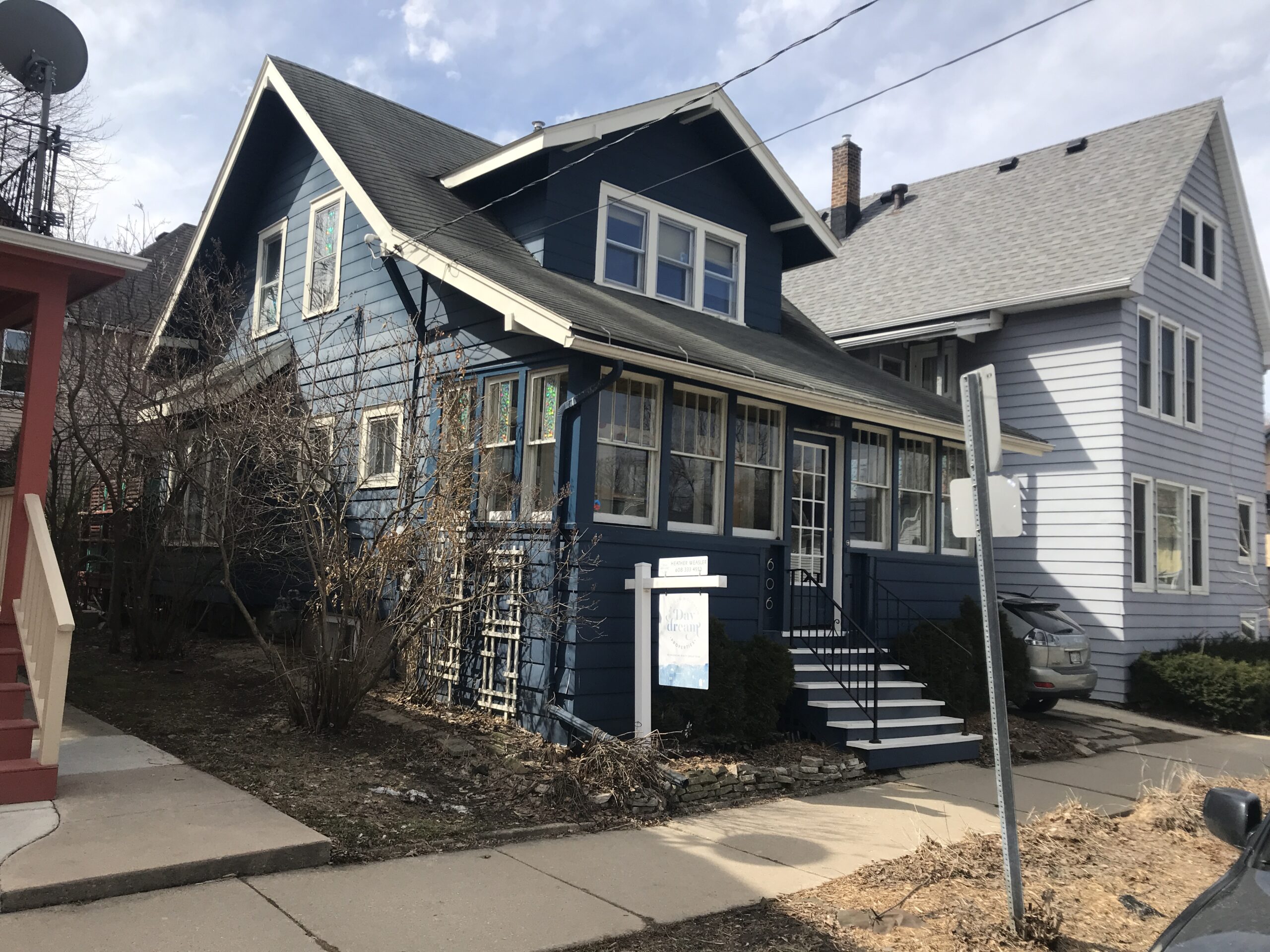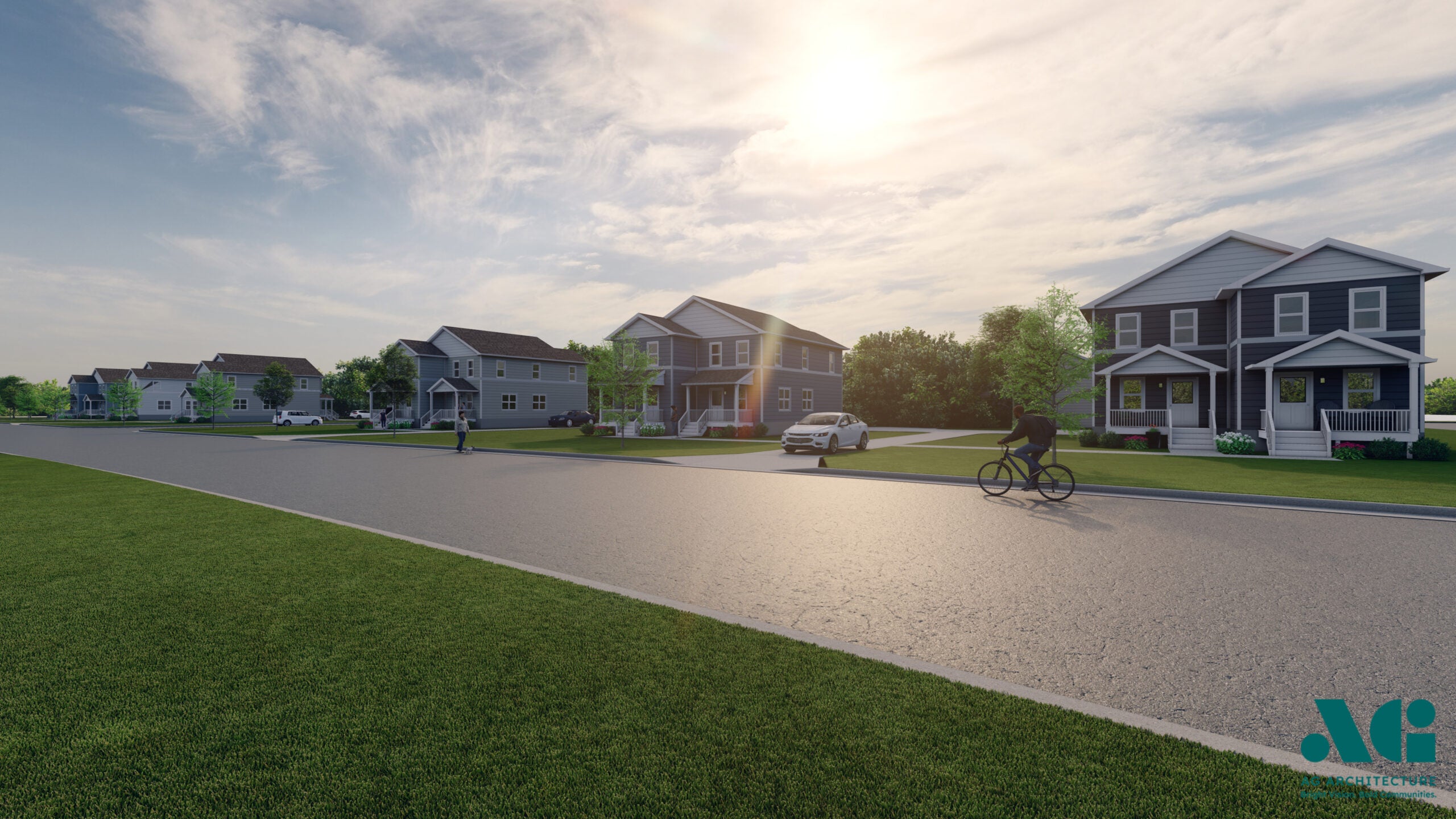Amy Kaiser is a recently divorced mother of two children. She’s 38-years-old, has a college degree and works at a bank in Elm Grove, earning what she describes as a lower-middle-class income.
Kaiser was living in Brookfield, but recently had to move to an eight-unit apartment complex in West Allis after a divorce.
“It’s not too far of a journey to work, but definitely not necessarily the community I wanted to end up in,” Kaiser said.
News with a little more humanity
WPR’s “Wisconsin Today” newsletter keeps you connected to the state you love without feeling overwhelmed. No paywall. No agenda. No corporate filter.
Kaiser wants to live in a home or duplex in Brookfield or Elm Grove. But she can’t afford it.
“It’s not a terrible wage, but with how high the housing market is in the Brookfield area, it does make you feel like, OK, well, I don’t belong here then,” she said. “It seems like a very attainable goal, but it’s not.”
Many other Wisconsin residents are in the same boat, as Wisconsin is dealing with a shortage of affordable housing and workforce housing, which some are calling a crisis.
State is in the midst of severe housing shortage
Kurt Paulsen, an urban planning professor at the University of Wisconsin-Madison, authored a 2019 study from the Wisconsin Realtors Association, titled “Falling Behind.” The report found the state had a severe workforce housing shortage due to a decrease in housing construction, rising housing costs and a decline in homeownership.
Four years later, not much has changed. Wisconsin has a shortage of more than 123,000 rental units, according to the National Low Income Housing Coalition. A January study from Forward Analytics also found that Wisconsin needs to build up to 227,000 new housing units this decade in order to solve its housing needs.
Paulsen said if someone works in a community, they should be able to afford to live in that community.
“There’s a shortage everywhere in the state, but it’s specifically severe in Waukesha County,” Paulsen said about workforce housing.
The Bureau of Labor Statistics found there’s 1.37 jobs for every home in Waukesha County — the highest rate in the state. Milwaukee County’s rate is at 1.08. That’s leading more communities in the Milwaukee-Waukesha-West Allis Metro Area to think about the need for workforce housing and affordable housing in their communities.
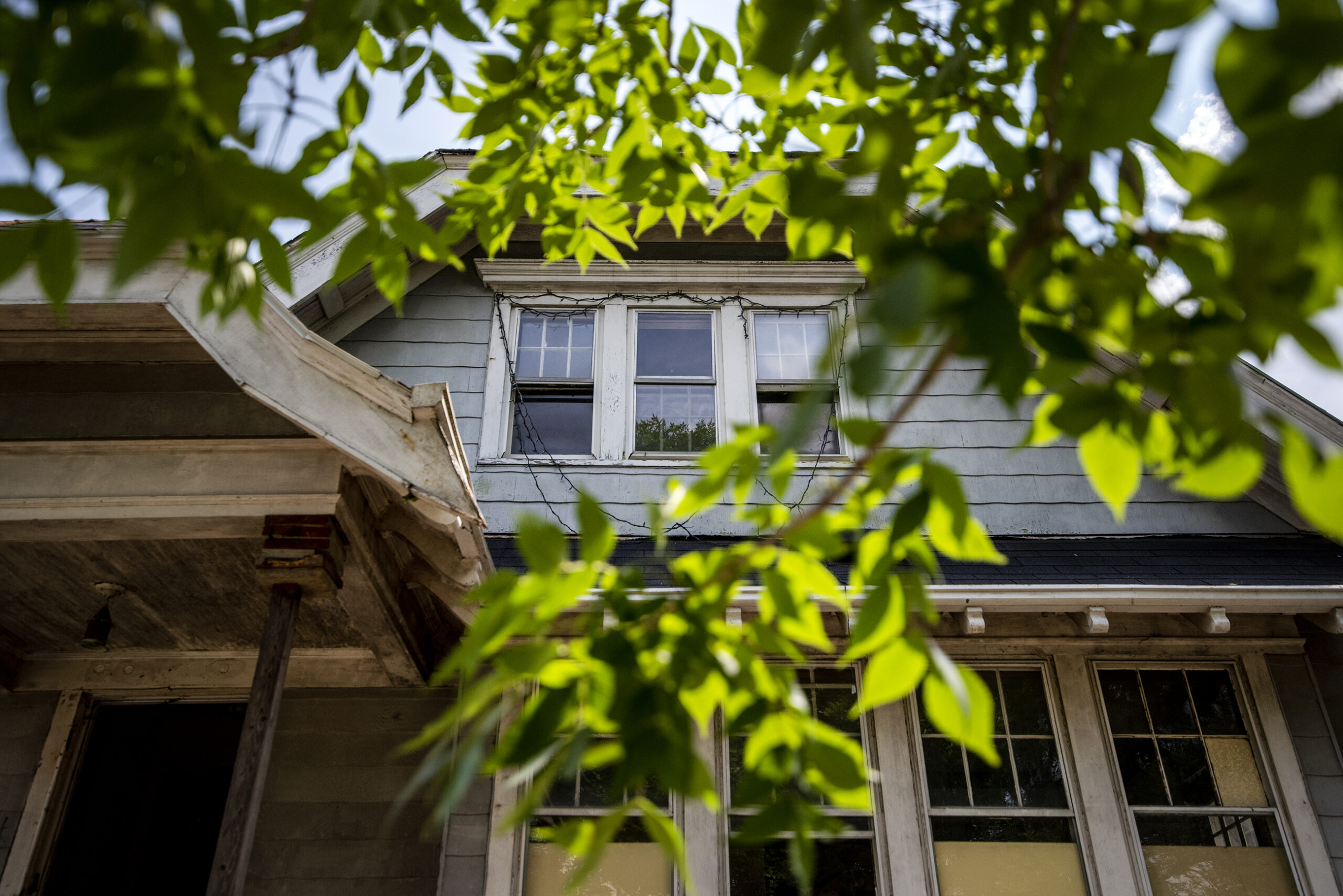
Brookfield alder comments raise concern
Some suburbs in Milwaukee County have ramped up their focus on the issue. But pushing for more affordable and workforce housing projects has faced hurdles in other communities, including in Brookfield.
In November, the Brookfield Common Council narrowly approved plans for a workforce housing project, where rents would be around $400 less than the average rent in the city. A 2020 report from RentCafe found Brookfield had the highest average rent rate in Wisconsin, at $1,470.
The Waukesha County Business Alliance, who is in favor of the plans, said the project will be affordable for individuals and families with an annual income of $42,000 to $85,000.
Suzanne Kelley, president and CEO of the Waukesha County Business Alliance, said 85 percent of Waukesha County businesses surveyed plan to hire more workers in the next three years. But some employers are struggling to fill job openings. Kelley believes part of the issue could be high home costs and rent rates in Waukesha County.
“Employers are struggling to fill thousands of jobs across Waukesha County,” Kelley said. “The inability to fill open positions negatively impacts our businesses and threatens economic growth for the county, the region and the state.”
But some residents and alders spoke out against bringing affordable housing to the community.
“The project basically will fundamentally change the demographics and the socioeconomics of Brookfield,” resident Richard Schoos said during a January meeting about the project.
Brookfield Alder Kris Seals said he’s worried the area where the project is being built could become an “apartment neighborhood.”
“We’re Brookfield … what we’re trying to do is step down to a West Allis or Wauwatosa. No, we’re Brookfield,” Seals said. “We don’t step down to allow the people who can’t afford to live in Brookfield to come in, because then we become West Allis and we become Wauwatosa. That’s not what Brookfield is.”
Brookfield Alder Mike Hallquist called those comments “shocking.” He wants the city to be a place that anyone can afford to work in and live in.
“The idea that a single apartment development, or a handful or multiple developments, is going to fundamentally change the characteristics of the city, I think is categorically false and easily disproved,” Hallquist said.
There are currently only two subsidized housing units in Brookfield, according to the Waukesha County Housing Authority. Brookfield’s apartment occupancy rate is also around 98 percent.
“People have to get over this fear or bias against multifamily housing,” he added. “There’s a need for it in our market and in Waukesha County.”
Is zoning the issue?
Paulsen said the main reason there’s not enough housing and variety of housing in communities across the state is restrictive zoning ordinances. Those could include large lot sizes, parking requirements, or zoning ruts that exclude townhomes, duplexes and multifamily rental housing.
“You see all of those types of restrictions in Waukesha County,” Paulsen said.
But Paulsen said Waukesha County isn’t unique in this problem.
“This is the common problem throughout suburban areas,” Paulsen said. “They have high levels of employment but inadequate levels of housing for the people who work there. So either housing is really expensive or people have to live far away from their jobs.”
Paulsen said it’s up to individual communities to address their own zoning laws. The League of Wisconsin Municipalities partnered with several statewide groups to release a toolkit for municipalities that includes zoning reforms to help promote affordable housing. It recommends communities allow for narrow lots, accessory dwelling units, multifamily developments in commercial districts and duplexes in more residential zoning districts.
The Metropolitan Milwaukee Fair Housing Council also works with communities to address policies that could hinder construction of affordable housing. Kori Schneider Peragine, a senior administrator at the Metropolitan Milwaukee Fair Housing Council, said Milwaukee is in a “housing crisis.”
“That crisis hits people of lower incomes even more significantly than everyone else,” she said.
Schneider Peragine said Brookfield has a significant amount of retail or service jobs that don’t pay a livable salary.
“Housing in those communities should be attainable to folks who work the jobs in those communities,” she said. “That’s just the way communities work.”
Wisconsin Public Radio, © Copyright 2026, Board of Regents of the University of Wisconsin System and Wisconsin Educational Communications Board.

